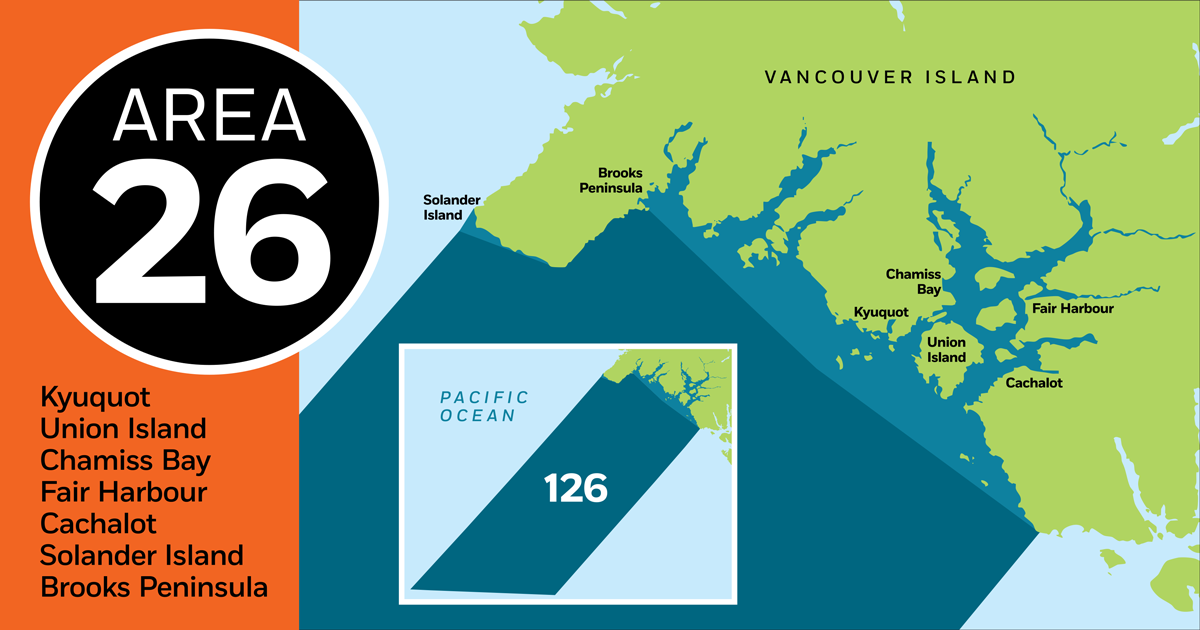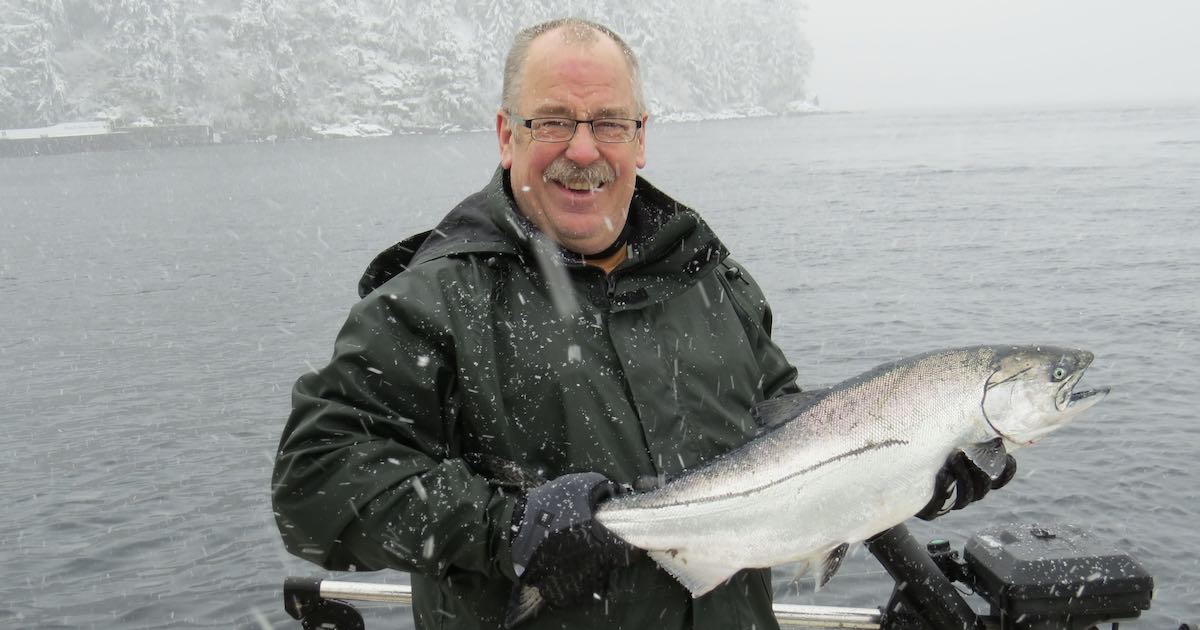
The Adult Salmon Diet Program, at the University of Victoria, collaborates with recreational anglers to collect data on the diet composition of adult Chinook and coho salmon along the BC coast. This data is valuable for understanding the role that salmon play within the larger ecosystem and provides a way to monitor ecosystem changes. Further, salmon stomach contents provide valuable data on prey populations in different regions, including poorly understood species such as pacific sandlance and northern anchovy. So far, recreational anglers have submitted over 2,000 stomachs to the Adult Salmon Diet Program! Without the dedication of participating anglers, this important research would be impossible.
One way we are using this data is to study the distribution and regional importance of Chinook salmon prey across the Salish Sea. To do this, we first examined how regions in the Salish Sea differ by Chinook salmon diet composition during the summer, when pacific herring are very important prey to Chinook. Based on differences in diets, we found that the Salish Sea could be divided into four broad regions: (1) the Strait of Georgia (PFMAs 13 – 17, 29; dominated by h), (2) Howe Sound and Vancouver (PFMA 28; high importance of anchovy ), (3) the southern Gulf Islands and Victoria (PFMAs 18 and 19; high importance of sandlance), and (4) Sooke (PFMA 20; high importance of herring). Keep this in mind next time you are debating what lure to choose!
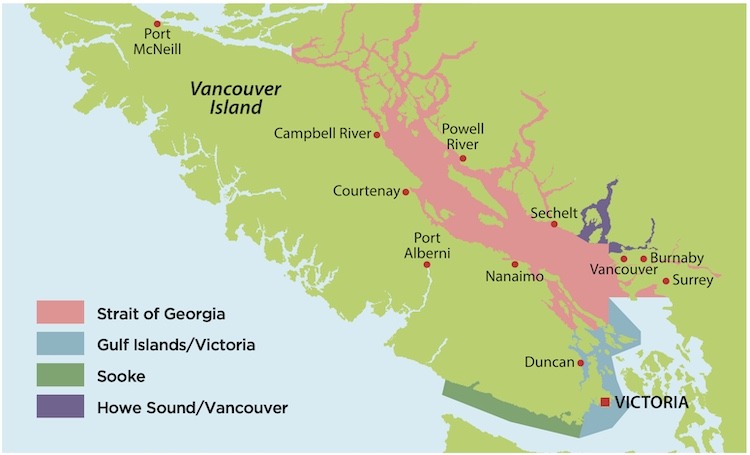
Map depicting the four distinct summer salmon diet regions of the Salish Sea. “We found that summer diets in the Salish Sea cluster into four distinct regions. We will also study how Chinook diets can divide the Salish Sea into regions of similar diet composition during the winter.”
Next, we will study how winter Chinook diets differ between regions in the Salish Sea, as there are fewer herring in the Salish Sea during the winter. There is very little research on forage fish during the winter in BC. As a result, Chinook salmon diets offer an important opportunity to study forage fish during the winter. We predict that the Salish Sea will vary more between regions during the winter, as fewer herring means that salmon must find less abundant fish that may be limited to small areas of the Salish Sea. From already collected diet data, we know that salmon that eat herring rarely eat other prey items. Therefore, with herring being less important during the winter, we expect to see prey that are not important during the summer become an important part of winter Chinook diets, such as pacific hake and lanternfish.
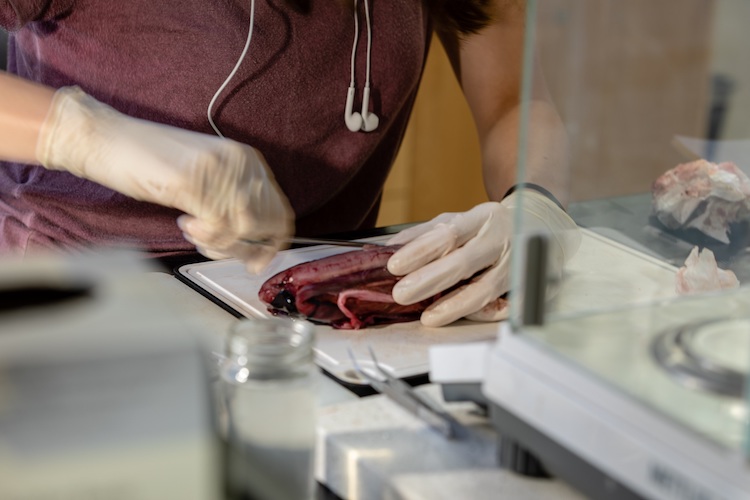
Stomach processing in the lab. Photo courtesy of RAWork Media
However, in order to study Chinook salmon diets during the winter, we need more stomach samples. So far, we have dissected 481 Chinook stomachs collected in the Salish Sea during the winter. Still, we need more stomachs. Importantly, we have very few stomach samples from PFMAs 14, 15, and 29 – too few to study differences between these regions and other parts of the Salish Sea. Therefore, we ask anglers in PFMAs 14, 15, and 29 to submit as many stomachs as they can to the Adult Salmon Diet Program. Even if you do not fish in these areas, increasing our sample size will allow us to better understand the diet composition of Chinook and coho salmon, both within the Salish Sea, and along the rest of the BC coast.
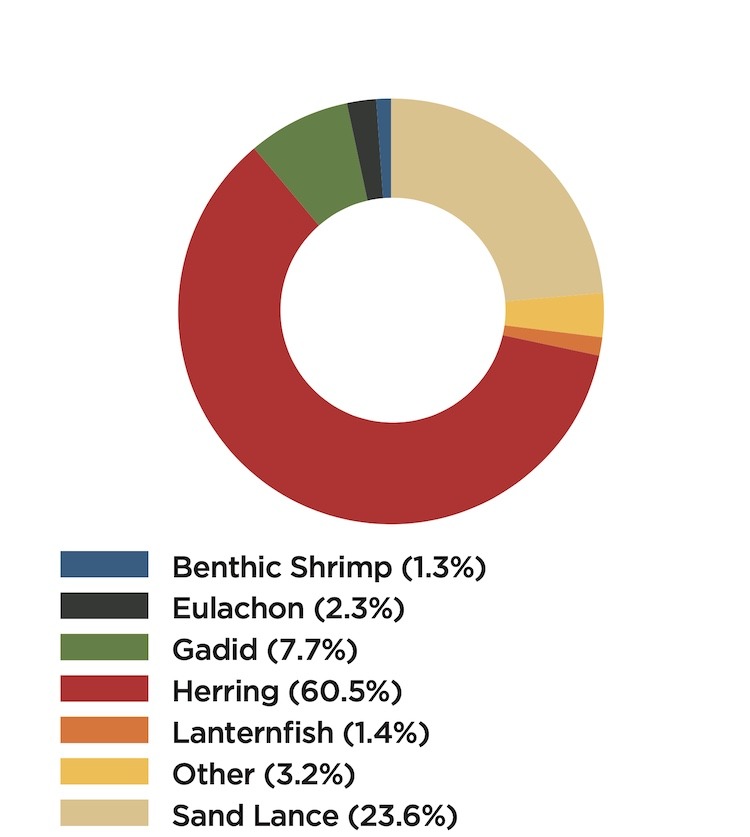
We send an individualized report to each angler participating in the Adult Salmon Diet Program, describing the contents of the stomach samples they submitted. This is an example from the report of an angler fishing in the Salish Sea
How to Submit Stomachs to the Adult Salmon Diet Program
Collecting and submitting adult salmon stomachs to the Adult Salmon Diet Program is easy! When you catch and keep a Chinook or coho salmon, instead of throwing away the guts or using them as crab bait, put the esophagus, stomach, and intestinal tract in a zip lock bag. Fill out an Adult Salmon Diet Program data card (available at participating tackle shops or by email request) with the information about your catch.
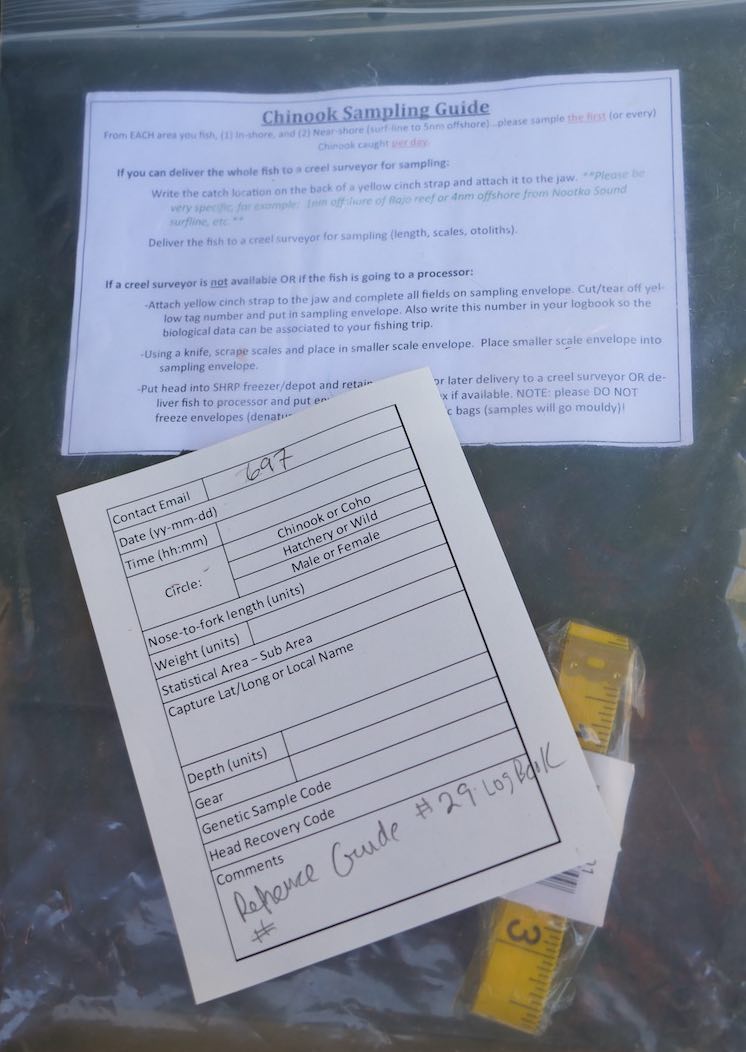
Sampling Package
Drop off the stomach and data card in the same bag at a participating tackle shop (see the list at the end of this article, or here). We will then dissect the stomachs in the lab to see what your salmon ate before you caught it.
Click here for full instructions for submitting
Why should you submit stomachs to the Adult Salmon Diet Program?
In addition to helping further our understanding of salmon in BC, there are a number of great benefits for participating anglers. At the end of each year, we send each participating angler a report describing the contents of the stomachs they submitted. Additionally, every stomach you submit enters you into our annual raffle for an Islander MR2 reel and a Salish Sea Spoon Pack from AP Tackleworks! Additionally, anglers who submit 10 or more stomachs during 2020 will receive an Adult Salmon Diet Program hat. 👇
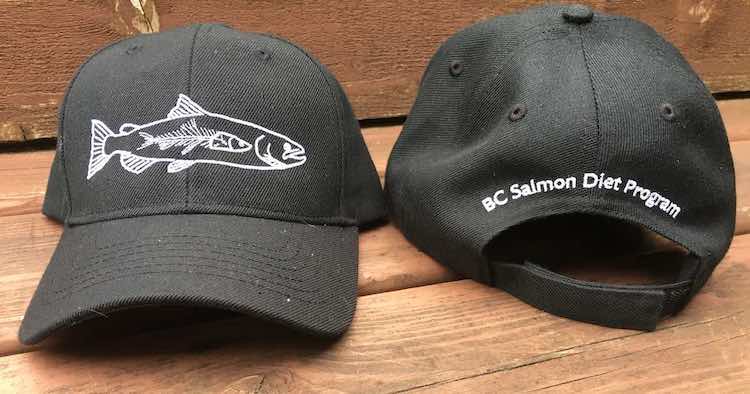
Program Hat
We thank the over 100 recreational anglers who have contributed stomachs to the Adult Salmon Diet Program. We hope that, if you are not already participating in the program, you will begin to submit stomachs and help us better understand the biology of adult salmon in BC! If you have any questions or want to find out more about the Adult Salmon Diet Program, please email us at juaneslabmanager@gmail.com.
Where to drop off stomachs: Anglers Clubhouse (Esquimalt), Home Hardware (Sidney), Bucky’s Sports (Duncan), Harbour Chandler (Nanaimo), Tyee Marine (Campbell River), Pacific Net and Twine (Parksville), Bon Chovy Charters (Granville Island), Pacific Angler (Vancouver), Chapman Creek Hatchery (Sechelt), Powell River Outdoors (Powell River), Bamfield Mercantile and Marine (Bamfield), and Ucluelet Aquarium (Ucluelet). Island Outfitters (Victoria).
Wesley Greentree, Research Assistant, UVic Adult Salmon Diet Program
Visit the Store
$34.99
$34.99
Featured Catch

Joel Unickow halibut (Photo: Rob Frawley Lucky Strike Sportfishing Tofino)





